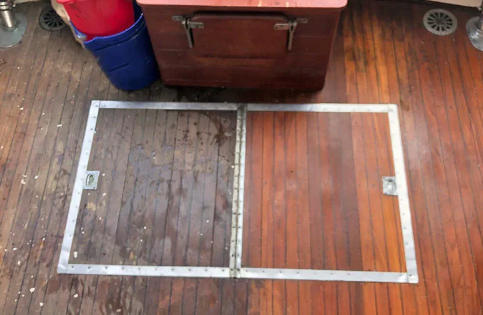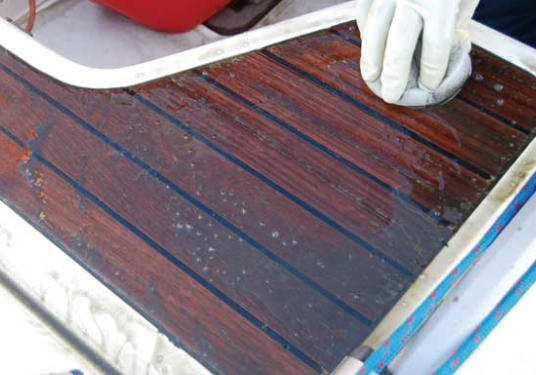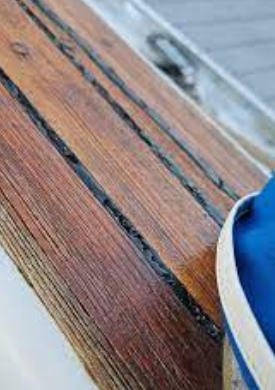










Content Menu
● Benefits of Redoing Teak Wood
● Preparation: Tools and Materials
● Step-By-Step Restoration Guide
>> Cleaning Teak Wood Thoroughly
>> Repairing and Preparing Surfaces
>> Troubleshooting Common Issues
● Maintaining Teak After Restoration
● Additional Expert Recommendations
>> 1. How often should teak wood be refinished?
>> 2. Can power sanders be used for large projects?
>> 3. Is it necessary to use teak-specific oil or sealer?
>> 4. How to prevent teak from turning gray after refinishing?
>> 5. Can repaired sections match the rest of the teak?
Teak wood's reputation as a premium material for outdoor and indoor furniture is unmatched, thanks to its golden hues, intricate grain, and legendary weather resistance. However, even the most resilient teak will lose its glow over time without careful attention. If your teak woodsurface now appears gray, rough, or blemished, follow this comprehensive restoration guide to renew its natural beauty and protect your investment.[1][2][4][11]

Teak (Tectona grandis) is celebrated not only for its natural oils and denseness but also for its unbeatable ability to resist the ravages of time and weather. Originating in Southeast Asia, teak's popularity spread globally, becoming the top choice for boat decks, garden furniture, upscale interiors, and even public infrastructure.[2][4][1]
Refinishing teak surfaces has both aesthetic and functional purposes:
- Restores warm, golden tones and natural sheen.[4][5][1]
- Extends longevity by safeguarding against rot, mildew, and UV radiation.[12][1][2]
- Reduces maintenance costs by preventing structural damage and splintering.[1][2]
- Improves hygiene by eliminating mold, mildew, and dirt buildups.[2][4]
The key to a successful teak restoration is proper preparation. Here's what you'll need:
- Garden hose or spray bottle
- Soft brush, non-abrasive sponge, or lint-free cloth
- Mild soap, teak cleaner, or vinegar-water mix[5][4][1]
- Sandpaper (120–220 grit): medium for stripping, fine for finishing[4][5][2]
- Wood filler for minor cracks/holes
- Handheld vacuum or tack cloth for dust removal
- Teak oil, sealant, or wood protector (marine/sealer types preferred over generic oils)[8][12][2]
- Rubber gloves, safety glasses, dusk mask
- Optional: power sander (only for large, flat surfaces; use with caution)[5][1]
1. Rinse the teak surface with a garden hose or spray bottle to remove loose dirt and debris. Avoid power washers unless absolutely necessary, as they may damage the wood's natural oils.[1][2][4]
2. Mix warm water with mild soap or teak cleaner. Gently scrub the wood with a soft brush or sponge, working in small sections for even cleaning.[4][5][1]
3. Rinse again to fully remove all soap and residue, preventing interference with later restoration steps.[2][1][4]
4. Allow the surface to dry completely; residual moisture may negatively impact sanding or finishing.[2][4]
- Fill shallow cracks or holes with teak wood filler, letting it cure fully before sanding.[1][2]
- For large repairs, replace damaged slats or sections—choose replacement teak matched for color and grain to avoid visual inconsistencies.[1][2]
- Confirm that surfaces are even and free of loose material or filler residue prior to sanding.
1. Use medium-grit sandpaper (120–150 grit) to strip away the outer layer of gray, weathered teak and minor imperfections.[5][4][1]
2. Always sand with the grain, as against-grain sanding creates permanent, unsightly scratches.[4][5]
3. For a silky finish, use fine-grit sandpaper (220 grit) in a final pass after rough spots are removed.[5][4][1]
4. If using a power sander, monitor pressure and speed closely to prevent gouging. Wear safety gear to minimize dust inhalation.[2][5][1]
After sanding, dust and debris can settle into wood pores, so:
- Vacuum or wipe the surface with a tack cloth to remove loose particles.[5][1]
- Optionally, wipe the entire surface with a water-vinegar solution to neutralize remaining dust. Rinse off and let dry thoroughly.[1][5]
Application of finish is crucial for maintaining vibrancy and durability.
1. Pour teak oil or sealer into a bowl. Using a lint-free cloth or brush, rub a thin coat evenly into the wood.[8][2][5]
2. Buff after the first layer dries to ensure penetration. Apply a second coat if needed, following manufacturer-recommended curing times.[2][5]
3. Prefer marine-grade teak sealers for high-moisture or outdoor surfaces, as they offer superior UV protection and mildew resistance.[8][2]
4. Avoid “teak oil” with synthetic additives, which may compromise the wood's natural oils and lead to cracking or rot.[12][8][2]
- Wear gloves throughout chemical treatments.
- Work outdoors or in well-ventilated environments.
- Repeat light cleaning and oiling every 6 to 12 months for best results.[12][4][2]
- Use furniture covers or shade to reduce UV and moisture exposure.[3][4]
- Sticky Finish: Over-application or poorly buffed oil causes stickiness; use a clean cloth to wipe away excess, and let air dry.[7][5]
- Surface Graying: This usually means the finish has worn off; re-sanding and reapplying finish resolves the issue.[1][2]
- Water Marks/Rings: Lightly sand and reapply oil to blend marks with the wood's finish.[6][7]
- Color Mismatch on Repairs: Use a teak brightener on all sections before finishing to ensure uniform tone.[4]

Ongoing care is essential to prolong results:
- Clean gently with mild soap and water; avoid harsh chemicals or abrasive brushes.[13][4][2]
- Reapply marine-grade teak sealer annually for best effect.[3][8]
- Protect surfaces from pooled water and standing moisture—store furniture in covered areas during rainy seasons.[3][2]
- Wipe away bird droppings, leaves, or residue promptly to prevent staining.[4]
- For antique or vintage teak, consider specialized restoration oils and gentle hand methods to preserve patina.[10][12]
- For indoor furniture, lighter natural oils may suffice; outdoor pieces demand stain, mildew, and UV-resistant options.[3][8]
- Avoid sanding veneer surfaces; multiple coats of oil will blend rings or light marks without destroying delicate layers.[6]
- Join online teak restoration communities for troubleshooting and tips.
Restoring teak wood is a systematic process involving cleaning, repairing, sanding, and sealing. Careful attention at each stage ensures the wood's golden luster and structural integrity are preserved for years to come. Regular maintenance, strategic shielding from harsh elements, and periodic refinishing will prevent graying and keep your teak products a stunning centerpiece. Whether for outdoor patios, garden benches, boat decks, or fine interior décor, teak's age-defying qualities are unlocked through diligent stewardship.

Teak wood should be refinished every 1–2 years, based on exposure and use, but annual maintenance prolongs appearance and function.[3][2]
Power sanders are suitable for flat areas but must be used gently to avoid excessive thinning or damage. Hand sanding is recommended for detailed pieces.[5][1]
Teak-specific oil and marine-grade sealers protect the wood's distinct qualities and offer superior weather resistance compared to standard finishes.[8][2]
Regular cleaning, annual sealing, and quick intervention at signs of weathering help prevent gray discoloration.[2][4]
Yes, using color-matched, grain-aligned teak and a brightener ensures repairs blend seamlessly for a professional finish.[4][5][1]
[1](https://www.diamondtropicalhardwoods.com/post/how-to-restore-outdoor-teak-furniture-a-complete-guide)
[2](https://teakanddeck.com/blog/how-to-refinish-teak-furniture/)
[3](https://images.restorationhardware.com/content/catalog/us/en/caresheets/OD_TeakCare.pdf)
[4](https://www.masayacompany.com/blogs/sustainable-home-journal/how-to-care-for-teak-outdoor-furniture-a-guide)
[5](https://www.therootsofhome.com/2023/02/how-to-refinish-teak-wood-furniture.html)
[6](https://www.reddit.com/r/Mid_Century/comments/4n0hjd/how_do_you_restore_and_take_care_of_your_teak/)
[7](https://www.reddit.com/r/finishing/comments/susr18/repost_what_steps_step_by_step_would_you_use_to/)
[8](https://semcoteakproducts.com/teak-care-use-guide/)
[9](https://sawmillcreek.org/threads/how-to-finish-teak.107936/)
[10](https://www.youtube.com/watch?v=Pzz_jQHIbpQ)
[11](https://hempshields.com/how-to-restore-teak-furniture/)
[12](https://www.vinterior.co/blog/sustainability/furniture-maintenance/how-to-maintain-teak-wood/)
[13](https://thediyplaybook.com/how-to-clean-teak-furniture/)
[14](https://www.youtube.com/watch?v=3qtD-Dxrm4k)
[15](https://www.youtube.com/watch?v=m5x44Biz9c8)